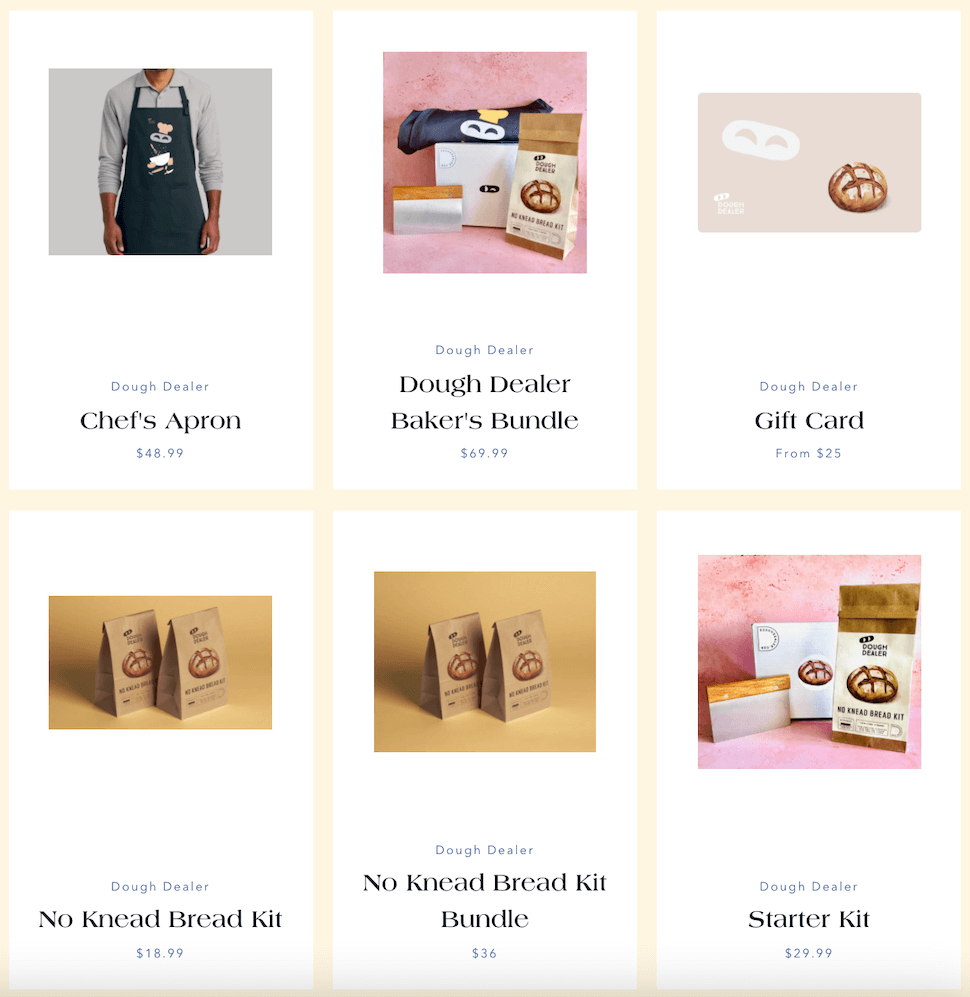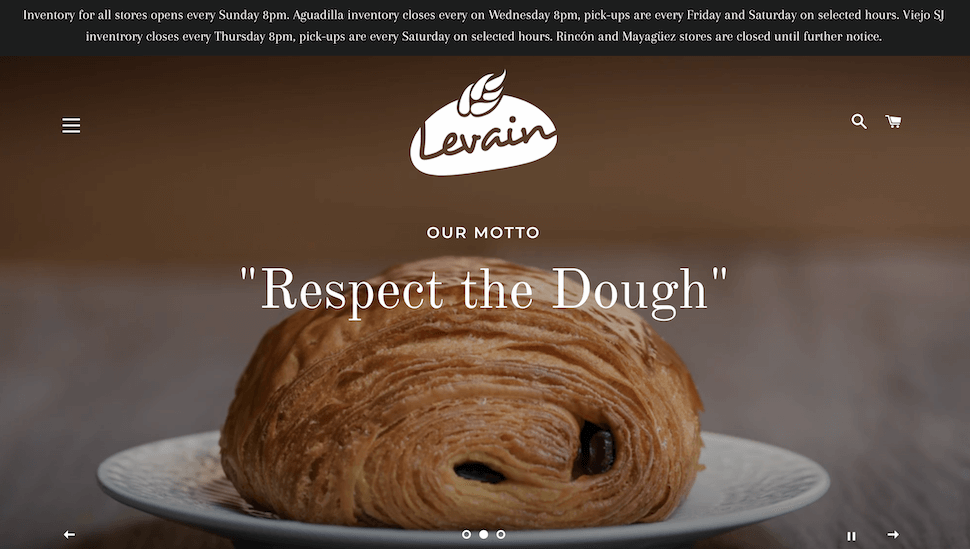

Learn how to write a bakery business plan, section by section. Get inspiration from examples of other bakeries.
21 Dec 2023
If you consider yourself a talented baker with entrepreneurial dreams, starting a bakery is an excellent business idea you can do from home or from another brick-and-mortar space. But before you launch into how to start a food business with your baking prowess, it’s important to write a bakery business plan.
Below, learn how to write your bakery business plan, section by section, using this business plan guide as a base. Follow along by downloading this business plan template and modifying it to fit your needs.
Not every business starts out with a formal plan, but those that do have an easier road to success. There are a few key benefits to writing a bakery business plan:
Writing a business plan helps you objectively evaluate your food business ideas—and researching and documenting your ideas allows you to take a step back and see if there’s really an opportunity there.
Your business plan serves as a roadmap for moving forward. Writing a business plan can identify the next steps you need to execute your idea. You can keep referring back to your business plan to make sure you’re on track for your original vision.
The process of writing a bakery business plan will also show you your gaps and needs. Listing exactly what you need to start your bakery business can show you what you’ll need to do to make it a reality.
A business plan helps you get capital, even if it’s a home bakery business plan. You won’t be able to secure funding for your business—whether from investors, lenders, banks, or even crowdfunding—without a business plan for your bakery.
A bakery business plan sample template is immensely helpful, especially if you don’t consider yourself a writer. When you start with a template, you can see every section that you need to complete. Templates can also offer prompts to help you figure out what to say and how to say it. This free business plan template, for example, offers a framework to simplify the job of writing out a business plan, so you can operate with confidence. It helps you analyze the market and understand how much time, money, and resources you’ll need to start and scale your bakery business.
The executive summary section of your bakery business plan summarizes the document and its contents. Remember, this is meant to highlight what’s to come in your business plan, not serve as a summary of your business idea.
Focus on your business’s core strength to draw in your reader. Keep it concise and to the point—you don’t want to lose your reader before they reach the meat of your baking business plan. Think about a hook to grab your audience’s attention.
Remember your target audience for the business plan and cater the executive summary to their needs. You might even have a few different versions of your executive summary to appeal to different readers, such as investors, lenders, or business partners.
The executive summary should be about a page in length and answer the following questions:
This part of your bakery business plan should drill down further into your business idea. Here, you’ll want to identify your bakery’s business structure—sole proprietorship, liimited liability corporation (LLC), general partnership, etc.—and business model.
You’ll also use this section to talk about the baked goods industry and about your specific niche within it—whether you’re offering keto-friendly, gluten-free, or otherwise lifestyle-specific items; cakes; catering; frozen desserts; savory pastries, etc. Cape Whoopies, for example, sells gourmet whoopie pies made in Maine. Its bakery business plan would make note of that in the company description section.

The company description should also outline your vision and mission statement and your value proposition. Your vision and mission statement encompass what you hope to do with your bakery, and your value proposition sums up why people would want to buy from you.
Use this section to talk about your team, including key personnel and their salaries. The bakery La Monarca, for example, would identify its two founders as well as any board members or employees.

Finally, list your short- and long-term business goals. Your business goals should be quantifiable and measurable, eliminating subjectivity. You’ll also want to put an estimated timeline for your business goals and when you hope to accomplish them.
The market analysis section of your bakery business plan quantifies how big your potential market is and validates that there’s enough demand for your business.
This section of the bakery business plan should explore the following:
You may also include a SWOT analysis, which identifies your strengths, weaknesses, opportunities, and threats, as well as a competitive analysis, outlining the competitive landscape and where your bakery fits in.
Don’t stress over the name of your bakery business too much yet—you don’t have to use your official incorporated name as your public-facing name forever. You can always file for a DBA (doing business as) or just publically drop the “Inc.” or “LLC” at the end of your name. Balkan Bites, for example, is technically an LLC called “Balkan Bites LLC.”

You’ll also want to include information about the makeup of your team, even if you plan to run the business yourself. Here are some other people and entities you might include:
In the products and services, you’ll list which products and services you’ll sell through your bakery. You’ll likely sell something like cakes, cookies, chocolates, pies, or even baking kits, and potentially branded merchandise products.
As far as baked goods go, consider more narrowly defined niches within the overarching bakery niche. For example, products that are tied to a specific culture, like a bakery that specializes in Italian cookies or French pastries, or event-related baked goods, like wedding or birthday cakes, all present excellent niches. You could also offer gluten-free, sugar-free, organic, or dairy-free goods.
The business plan should cover how many different types of products you’ll offer, and if you plan to release new recipes, or limited-edition or seasonal items.
You’ll also want to consider other non-bakery items. Dough Dealer, for example, doesn’t actually do any baking, so it doesn’t sell any baked goods. Instead, it sells kits with baking supplies online, as well as merchandise. You can do the same thing with a print-on-demand company.

The customer segmentation section of your bakery business plan should discuss the different groups of shoppers you intend to target with your bakery. Include the following information about each of your segments:
Here’s what a customer segmentation section might look like: Levain serves a few distinct geographic markets in Puerto Rico, including San Juan, Aguadilla, Mayagüez, and Rincón. Each of these regions represents a specific customer segment for the bakery, and they may have different shared characteristics. So Levain adjusts its promotional and marketing strategy according to its audience.

Your marketing plan is a high-level overview of how you plan to promote your bakery. The marketing plan should outline which channels you plan to use for marketing and advertising, as well as any budgets you might have. At a minimum, this section of your bakery business plan should define the following:
Zero-sugar cookie brand Sundays used email marketing to promote its bakery business and build buzz pre-launch. The brand allowed people to subscribe so they would be alerted when the online store launched. This approach is also an excellent tactic for email list-building.
Here are some more resources to help assemble the marketing section of your bakery business plan:
Your logistics and operations plan outlines exactly how you’ll create and sell products and fulfill orders. Be sure to address each of the following:
Identify where you’ll purchase the raw ingredients you need to make your baked goods and where they’re produced. Will you purchase anything pre-made from suppliers or make everything from scratch?
Outline whether you’ll make, wholesale, or even dropship your products. Describe how long it takes to receive raw ingredients and how long it takes to produce your baked goods. You’ll also want to think about a contingency plan: How will you handle a busy season or an unexpected spike in demand?
Where will you and any team members work? Do you plan to have a physical retail space as well as the bakery? If yes, where? Will they coexist or exist in different locations?
List which tools and technology you require to get you up and running: think items like ovens, mixers, refrigerators, etc., as well as business tools like a POS system or card reader. You’ll even list items like lightbulbs, counters, and anything else you’ll need to purchase to open your bakery.
Will you be handling all the fulfillment tasks in-house or will you use a third-party fulfillment partner? Will you have a space for in-person shopping or pickup?
How much raw ingredients will you keep on hand, and where will they be stored? How much finished product can you keep on hand, and where? How will you ship products to partners if required, and how will you approach inventory management?
The bakery Wildgrain, for example, operates on a subscription-based business model. The brand outlines how it works on its website, information that would also be suitable for the logistics and operations section of its bakery business plan.

The sourdough bakery Florets offers a subscription plan as well as in-person pickup at its Auckland-based bakery location or at a weekly farmers market.
The Protein Bakery also has a few methods for fulfillment. Customers can visit its New York City–based retail shop or order online, and other businesses can also purchase its products wholesale.
The financial plan shows possible funders that you’ve done your math homework and crunched the numbers to figure out how much money you need to launch, how much you need to operate, and whether you can turn a profit.
The financial plan typically includes the following financial statements:
Here’s a spreadsheet template that includes everything you’ll need to create the above financial statements, including some sample numbers. Just edit it as needed.
When putting together your financial plan and statements, be realistic and specific. While you want to be optimistic about your projected success, it’s equally important to be pragmatic. Use the information you’ve learned developing other parts of your bakery business plan to calculate accurate, achievable numbers.
Starting your new venture with a successful bakery business plan is a surefire way to set yourself up for success from the get-go. Your bakery’s business plan will keep you and your team accountable and aligned with your vision and goals.
When you’re ready to launch, build your website on Shopify. With Shopify, you can seamlessly integrate your retail and ecommerce tech stack to maintain complete control of your growing business.
You can start your own bakery business plan using the above post and this free business plan template.
The average bakery earns $325,000 to $450,000 in annual revenue, and the average bakery owner earns an annual salary of $77,518, according to Salary.com, or $135,634, according to Ziprecruiter.
A bakery business can be profitable, especially if you start with a business plan like the one in this post. The average bakery earns up to $450,000 in annual revenue.